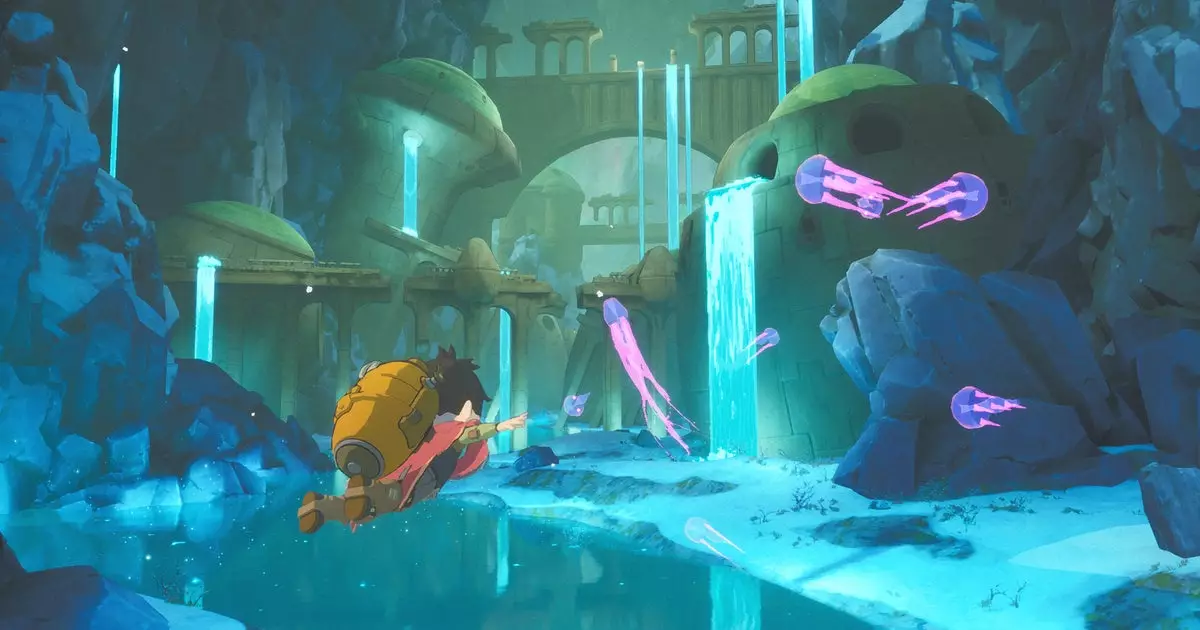“Studio Ghibli” represents more than just animation; it encapsulates a distinct aesthetic and emotional landscape that resonates deeply with fans worldwide. This influence has perpetually seeped into various media, including video games, where titles often evoke the whimsical charm and intricacies typical of Ghibli’s storytelling. The recently launched game “Europa” signifies a significant attempt to capture this essence. With its expansive skies, lush landscapes, and a narrative enriched with puzzles and adventures, “Europa” invites players to step into a world that feels familiar yet distinct, reminiscent of Ghibli’s imaginative realms.
At its core, “Europa” revolves around its central character, Zee, an android who embarks on a journey laden with secrets, challenges, and physical exploration. A hallmark of the gameplay is the enhancement of movement dynamics, allowing Zee to evolve from mere jetpacking to soaring between sky islands. This progression not only evokes joy in mobility but also reflects a crucial aspect of adventure in Ghibli narratives—freedom and exploration. Players are beckoned to not just traverse the landscape but to engage actively with its mysteries, evoking memories of classic adventure games like “Legend of Zelda” that beautifully balance exploration with puzzle-solving.
Although “Europa” boasts stunning visuals crafted by Helder Pinto—a former environment artist at Blizzard—the question arises: does its aesthetic merit transcend mere imagery? Many games inspired by Ghibli often risk devolving into superficial recreations, prioritizing visual flair over narrative substance. While “Ni no Kuni: Wrath of the White Witch,” for instance, successfully melds its Ghibli artistry with a powerful score, it still feels like a nostalgia-driven endeavor rather than a wholly original experience. The challenge for “Europa” is carving out its uniqueness amidst a tapestry that has been woven too often with Ghibli motifs, without sacrificing the emotional heart that those films so poignantly convey.
As players are presented with 3-4 hours of gameplay intricately designed with engaging puzzles and moments of serene exploration, the challenge rests not solely in its mechanics or aesthetics but in the experience it offers. Can “Europa” redefine its narrative, breathing fresh life into familiar motifs? Or will it adhere to the trend of being mere eye candy, lacking the depth often found in genuine Ghibli storytelling? While the demo may not be available to test these waters, the full game, attractively priced on platforms like Steam, offers an accessible guide into this intriguing universe.
In a realm where numerous titles guilty of using Ghibli’s aesthetic exist, “Europa” stands as an intriguing entry both for its visual beauty and its gadgets. The developers’ ambitions may yet lead to a delightful fusion of nostalgia and innovation, allowing players to not just relive cherished memories but also discover new narratives amid Ghibli-like enchantment. Whether “Europa” emerges a celebrated gem or remains a mere homage will ultimately depend on its ability to deliver not only on gameplay dynamics but on the art of storytelling—an endeavor worthy of Studio Ghibli itself.


Leave a Reply